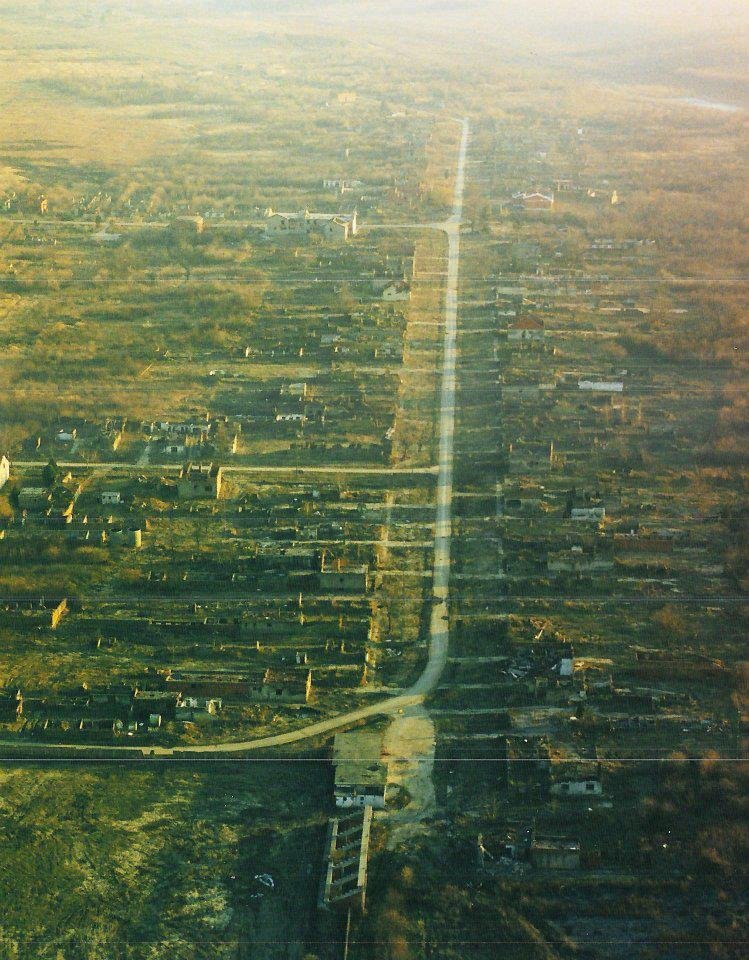Bogdanovci, a village in the Vukovar municipality in the Srijem region of eastern Croatia had a population of 1,100 inhabitants in 1991 of which 82 percent were Croats.
With the escalation of the uprising of rebel Serbs in the vicinity of Vukovar and the death of twelve Croatian police officers in Borovo Selo in the spring of 1991, traffic to and from Vukovar shifted to Bogdanovci as the main road through Bršadin was often disrupted by barricades. A few days after the tragedy in Borovo Selo, the residents of Bogdanovci took to the streets and prevented the passage of the Yugoslav People’s Army (YPA) convoy, clearly showing the tanks and transporters that they had no place being there.

At the beginning of the Battle for Vukovar, the city’s only connection with the rest of Croatia was the so-called “corn road” between Vukovar and Bogdanovci. This link was cut off following the fall of the village of Marinci and Bogdanovci found itself surrounded. Although it suffered daily attacks from tanks and infantry, the brave defenders of Bogdanovci successfully repelled the assaults of a much more powerful enemy.
Bogdanovci was defended by approximately 200 soldiers comprised of National Guardsmen, Croatian Defense Forces (CDF), police and local residents. When they ran out of ammunition a decision was made to withdraw and on 10 November 1991, together with wounded and civilians, they set out in several groups to break through enemy lines. Although it was only 6 kilometres to Croatian-controlled Nuštar, itself under heavy fire, the breakthrough push lasted several days and nights for some as they retreated through minefields and occupied Croatian territory.

One of the lasting testaments to the bravery of Croatian soldiers during the Battle of Vukovar was what became known as the “baton of death” formed by the members of the Croatian Defense Forces. CDF soldiers walked at the head of the column through the minefields to ensure the safety of those who followed and when one triggered a mine, another CDF member volunteered to lead the column fully aware of the fact that his next step could kill him. To date, it has not been determined exactly how many were killed in this deadly relay. With the fall of Bogdanovci, it became clear to the Vukovar’s defenders that the end was near as recalled by Damir Markuš in his book “58 – HOS in the Defense of Vukovar and Bogdanovci”:
After the fall of Bogdanovci, we knew we were on our own, we knew it was the beginning of the end.
With the entry of the aggressor into the village, the elderly and frail inhabitants who remained in the village were killed and all residential, cultural and sacral buildings were completely destroyed. The once beautiful, pleasant Slavonian village took on an eerie appearance and photos taken just before the peaceful reintegration of Croatia’s Danube region were reminiscent of Hiroshima.

From their first day in exile and despite all the hardship and suffering they experienced, Bogdanovci’s inhabitants would not be discouraged from preparing to return to their village. Although located only three kilometres away in the refugee settlement in Rokovci, they spent seven years in exile before they finally returned to their homes.
Graduated with a Master’s Degree in History from the University of Zagreb. He has worked at the Croatian History Museum and as a researcher for the popular TV Calendar program for Croatian Radio and Television. He has authored several books and documentaries about Croatia’s Homeland War and is the creator/producer of the immensely popular “It Happened on this Day – Homeland War” Facebook page as well as the online portal Domovinskirat.hr. Borna also is the host and editor of the daily segment “Patriotic Minutes” on Croatian Catholic Radio. He created CroHis to promote the values of the Homeland War and ensure that the sacrifices of those who defended Croatia’s independence would not be forgotten.

